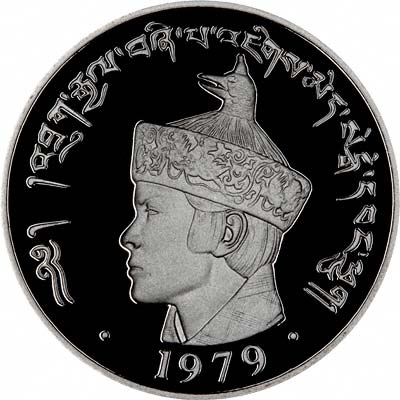| The Very Highest Quality Information... |
| Bhutan and Bhutanese Coins |
|
| ||||||||||||||||||||||||||||||||||||

| ||||||||||||||||||||||||||||||||||||
|
| ||||||||||||||||||||||||||||||||||||
|
| ||||||||||||||||||||||||||||||||||||
Early History
Bhutan first came into existence as a political entity in around the 9th Century A.D. when it was founded by Tibetan monks fleeing from the turmoil elsewhere in Tibet. The lands which today constitutes Bhutan were unified by the Lama (high priest) and Shubdrung Ngawanag Namgyal in 1616, having defeated Tibetan invasion attempts and seperatists from rival Buddhist sects. He enacted a legal code that was enforced throughout Bhutan, known as the Tsa Yig.
Re-consolidation and Relations with Britain
Bhutanese unity fell apart in after the death of Namgyal in 1651, and the Shubdrung’s authority was eroded as rival factions fought with each other and against the authority of the Shubdrung.
During the 18th Century, the British, in the form of the East India Company, pressed towards the borders of Bhutan. Skirmishes and wars between the British and the Bhutanese continued until 1865, when a treaty was signed between the British and the Bhutanese in which the Duars were ceded to British India in return for a rent of 50,000 Rupees a year.
In the 1880s Ugyen Wangchuck, Governor of Tongsa, fought a unifying war in which he gained supremacy over all the other factions and warlords in Bhutan. In 1907, he was elected as hereditary monarch of Bhutan, and the Kingdom of Bhutan was thus founded.
In 1910, a treaty signed between Britain and Bhutan gave Britain control over Bhutan’s foreign relations, and this treaty was inherited by an independent India in 1947 and was not rescinded until 2007.
20th Century to the Modern Day
In 1953, the formerly absolute monarchy began to make inroads towards establishing democracy when King Jigme Dorji Wangchuck established an elective National Assembly legislative body. He also formed a cabinet in 1965 to help govern the country. When he died in 1972, his 16 year old son, Jigme Singye Wangchuck succeeded him as King.
His rule marked more democratic reforms, but also controversy, as he forcibly expelled many non-buddhists in order to preserve Bhutanese culture. It is estimated that as many as 1/5 of the Bhutanese population was driven out of Bhutan during this period. In 2003, the Asom Liberation Front, an armed rebel organisation, was crushed and driven out by the Bhutanese army.
In 1999, the King lifted a long-standing ban on television. Following the institution of a new constitution, King Singye Wangchuck abdicated in favour of his son, Jigme Khesar Namgyel Wangchuck in 2006.
Bhutanese Coins
Bhutan’s currency was the Bhutanese Rupee until 1974, when it was replaced with the Ngultrum at par. Both currencies are/were equivalent to the Indian Rupee, and the two currencies often circulate alongside each other in Bhutan. Denominations include the 25 and 50 Nya Paisa and the 1 Ngultrum coins, all struck in cupronickel. They are struck primarily in English.
For Sale and Wanted
If you are interested in coins from Bhutan please see our product index:-
Bhutanese Coins
Gold Coins
We also have gold coins from Bhutan on our taxfreegold website:-
Bhutanese Gold Coins
| ...at the Lowest Possible Price |
|
32 - 36 Harrowside, Blackpool, Lancashire, FY4 1RJ, England.
Telephone (44) - (0) 1253 - 343081 ; Fax 408058; E-mail: info@chards.co.uk The URL for our main page is: https://24carat.co.uk |
Web Design by Snoop |